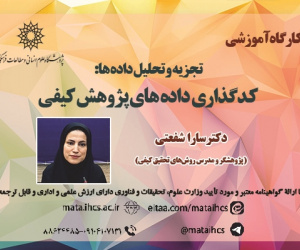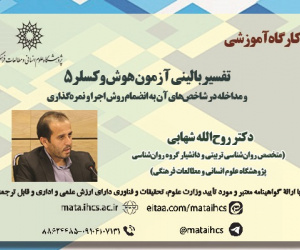ارشاد الزراعه، متن جامع فلاحت در دوره تاریخ میانه ایران
آرشیو
چکیده
ایرانیان مبدع روش های کشاورزی به خصوص آبیاری و باغ سازی در تاریخ تمدن بشری بوده اند، از پرورش گیاهان جدید تا ابداع قنات و روش های افزایش تولید محصول حاصل کوشش های کشاورزان ایرانی در طول قرون است. حاصل این تجربیات در متون علمی کهن ایران منعکس است. از قرن ششم به بعد تصنیف متون تخصصی در رابطه با فلاحت شکل می گیرد و آثاری چون ورزنامه، آثار و احیا و ارشادالزراعه در طول قرون به نگارش در می آید. همچنین در لابه لای متون ادبی و سفرنامه ها، به روش های کشت و زرع پرداخته می شود و مفاهیم کشاورزی در معنای حقیقی و استعاری در ادبیات فارسی نیز به کار می رود. جامع ترین اثر تخصصی تا شروع دوره نوین آموزش کشاورزی بعد مشروطه با نثری زیبا و ادبیانه، ارشادالزراعه، تألیف قاسم بن یوسف ابونصری هروی، در قرن دهم نگارش یافته است. این کتاب در مقایسه با آثار دوره میانه و نیز تألیفات به زبان عربی بسیار دقیق تر به کلیه موضوعات کشاورزی با روشی منسجم تر از آثار پیش از خود به امر کشت و زرع، باغبانی و گلکاری پرداخته است. در این نوشتار روش پژوهش توصیفی تحلیلی و با تکیه بر اسناد و منابع کتابخانه ای، ارشاد الزراعه معرفی شده است. جلوه ویژه این اثر افزون بر جلوه های ادبی و مباحث کشاورزی پرداختن به باغ آرایی ایرانی و صنایع غذایی است.Ershad- Al Zeraee, Complete work of Agriculture Science in Iran Middle age History
Iranians have been the inventors of agricultural methods, especially irrigation and gardening in the history of human civilization, from the cultivation of new plants to the invention of aqueducts and methods of increasing crop production, it is the result of the efforts of Iranian farmers over the centuries. The results of these experiences are reflected in the old scientific manuscript texts of Iran. From the 6th century onward, a compilation of specialized texts related to agriculture was formed, and works such as Varznameh, Asar va Ehya , and Ershad- Al Zeraee were written throughout the centuries. In addition to literary texts and travelogues, farming methods are discussed, and agricultural concepts are used in Persian literature in a literal and metaphorical sense. The most comprehensive specialized work until the beginning of the new era of post-constitutional agricultural education with beautiful and literary prose, Ershad al-Zaraeh, written by Qasim bin Yusuf Abu Nasri Heravi, was written in the 10th century. Compared to the works of the middle period and also the works in Arabic language, this book deals with all the agricultural issues in a more coherent way than the works before it, on cultivation, gardening and floriculture. In this article, the method of descriptive and analytical research, based on library documents and sources, is introduced. The special feature of this work, in addition to literary effects and agricultural topics, is to deal with Iranian gardening and food industry.







